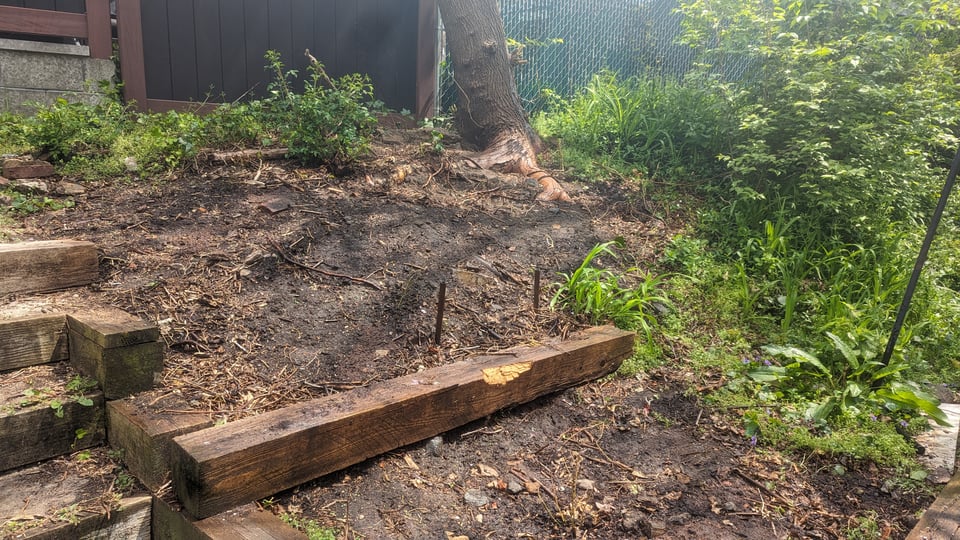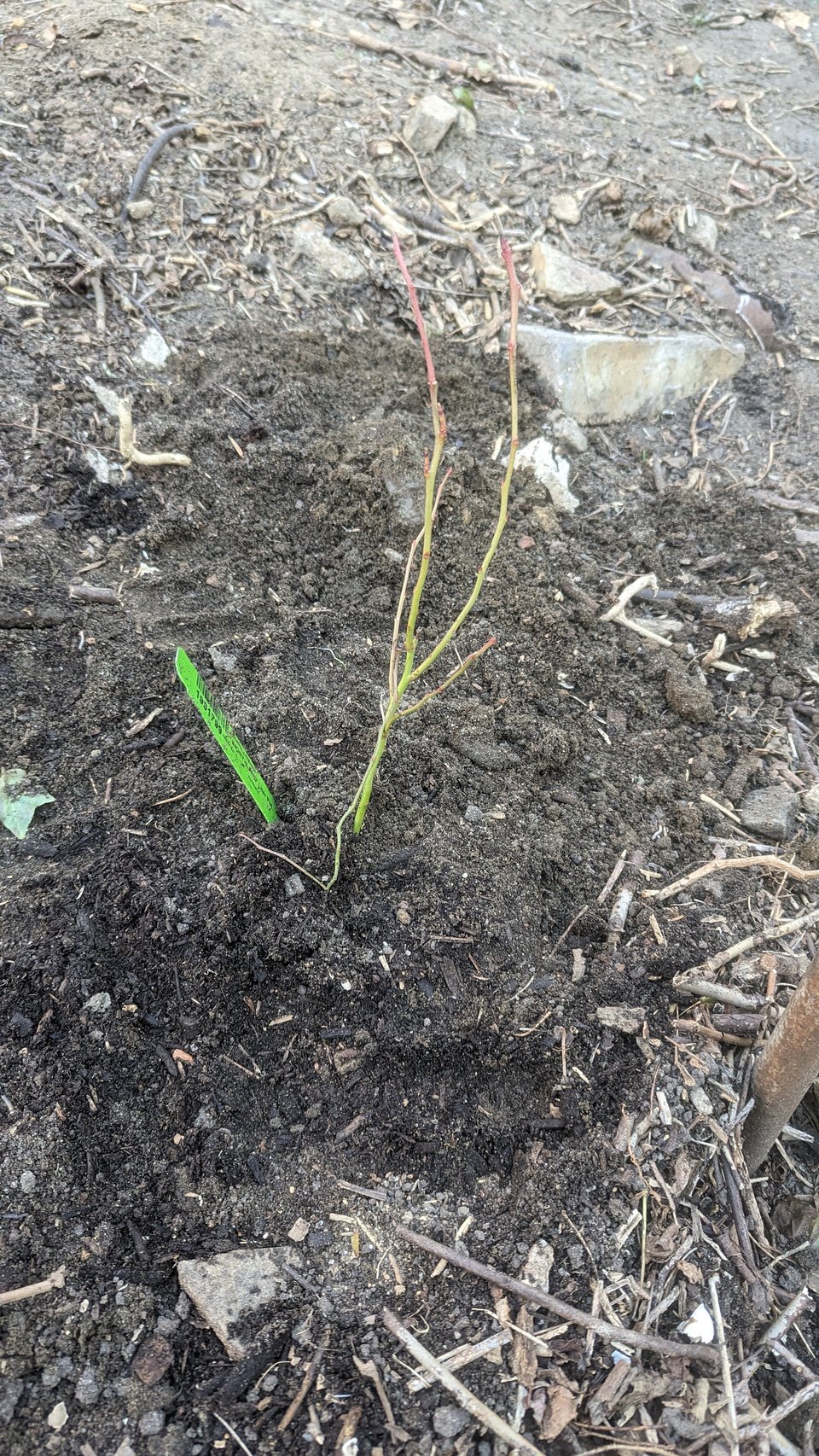west of the moon: I'm sorry, it's all about plants.
One very essential thing about me and gardening: I have no idea what I'm doing. I have a lot of plans and ideas and thoughts and principles! Just also the constant feeling that I'm winging it.
The overall long-term plan is to convert as much of our yard to native plants as possible. Good for the birds and pollinators, good for drought tolerance and flood resistance, good all around. In some places I'm doing it bit by bit, and then every once in a while I get all dramatic about it.
There's this slope in the backyard that had, until recently these massive yew hedges. Some types of yews are native to this region, but this wasn't one of those, and also it was enormous and required maintenance to not look insane, and I did not like it, and it had to go. I spent a while trying to cut it back myself, which mostly helped me realize how very large these plants really were. We called a landscaper, and three hundred dollars later all the giant yews were gone, leaving me with a bare dirt slope.

This patch of the yard is bizarre and confusing. There are metal poles and rods all through the dirt. At first I thought it was all infrastructure designed to keep the massive yew hedges in place, and that's still my going theory, but there's also a small chance that as I pull metal sticks out of the dirt I'm going to cause the whole thing to landslide down into the rest of the yard. We're taking risks here. Digging around the yews also unearthed a lot of old beer cans. Not old enough to be interesting, just old.
I did research, by which I mean I spent a lot of time reading native plant nursery guides, and reading the Audubon and Lady Bird Johnson Foundation and Xerxes Society sites, and I came up with a plan. Three highbush blueberries to anchor the site, three different varieties so that they'll cross-fertilize and also bloom on slightly different cycles, and then surrounding them a range of ground-cover plants. I picked wild strawberry and wild geranium. They're both supposed to be fast-growing and fast-spreading, supportive of all the ecosystems I want to nurture, and tolerant of a pretty big range of sun and shade. (That last is important—in theory the blueberry bushes will eventually grow quite tall, but it will take a while, and I want the ground-cover plants to be happy when they’re all alone on the slope but also when they’re neighbors with a big blueberry bush.)
Prairie Moon Nursery, by the way, is awesome. That’s where I got the wild geranium and wild strawberry. They shipped as “dormant bare root” plants, which is apparently safer and also much cheaper, but it means kind of what it sounds like, bare roots. It’s not five-inch-tall potted plants, it’s handful of plant roots with tiny hopeful shoots coming out the top. The blueberry bushes shipped similarly, from a different nursery. As I described it to Matt, I basically ordered a very expensive box of sticks.
Last week I planted the blueberries, today I planted the ground cover. I dug little holes and mixed some compost with some dirt, covered everything over gently, scattered a lot of potting soil in the general area, and watered the hell out of it all. So maybe what I mean when I say “I have no idea what I’m doing” is just “I spent a decent amount of money and a lot of time and I’ve turned a big bare patch of dirt into a big bare and very slightly less bare patch of dirt.”


The blueberry bushes came with specific instructions—for the first two years, pull off any flowers as soon as they develop. This will force the plant to put energy into growing roots and branches, not flowers and fruit. I love these instructions because they are so optimistic—they imply that at some point during this growing season, this tiny bundle of sticks will grow large enough to produce flowers.
Will this become a cool and beautiful native-plants bird-sanctuary hillside garden? Or have I made a horrible mistake in insisting that those big yew hedges had to go? We’ll find out!